Mushrooms are a very healthy product that contains many healthy vitamins and minerals. Moreover, they relate to products that have high allergenic properties. In addition to the development of allergic reactions, the fruits can impede digestion and cause upset stools and abdominal discomfort.
There are contraindications to the use of forest gifts in the diet - for example, children's age. Also, the use of certain types of mushrooms by the mother during breastfeeding can harm the baby.
Content
Possible harm to mushrooms for mother and baby
The greatest risk in the use of mushrooms during breastfeeding is associated with their ability to accumulate radionuclides, salts of heavy metals and other toxic substances that with milk can get into the fragile body of the baby and cause severe intoxication. Some species can form spores that enter the lungs with air, causing allergic reactions and a spasm of the smooth muscles of the bronchi.
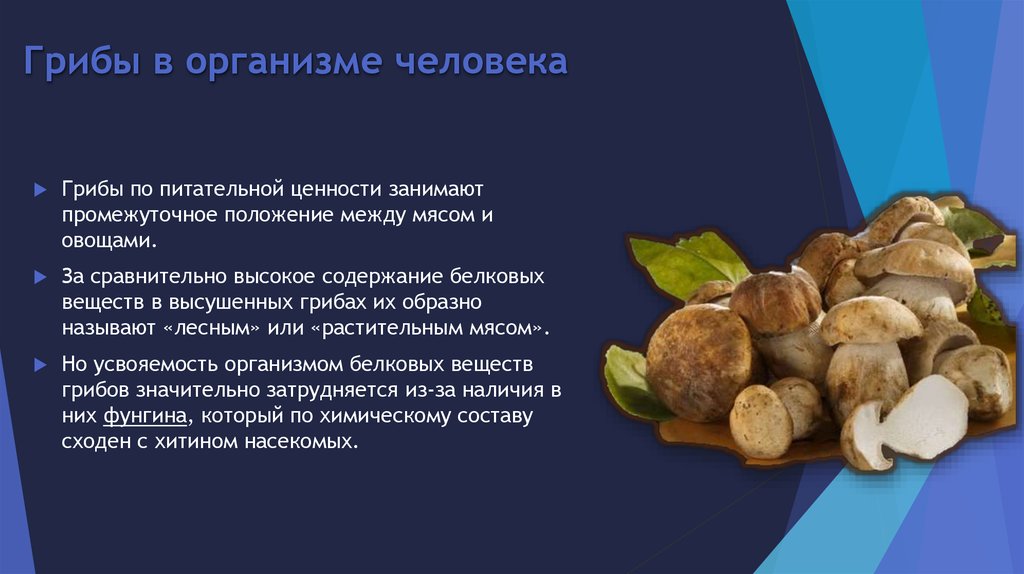
Mushrooms contain chitin, a large amount of fiber and carbohydrates, therefore they are considered a heavy product that can have a negative effect on intestinal motility and cause increased gas formation. In children of the first year of life, this can lead to increased fermentation reactions in the intestines and cause flatulence and colic.
The baby may have an upset stool or vomiting. Frequent cases of poisoning are known. Even the fruits are very difficult for the liver, gall bladder and kidneys, they can provoke an exacerbation of inflammatory diseases of the gastrointestinal tract (gastritis, colitis) in both the mother and the child.
Is it worth it to eat mushrooms during pregnancy and lactation, is determined by each woman independently, taking into account the characteristics of her body and the regimen of feeding the baby.
Mushrooms that can be used for HS and their benefits
The protein content in mushrooms exceeds that of meat and vegetables by several times, but the degree of its digestibility is slightly lower. They also contain amino acids, vitamins, fiber and minerals that are not found in other products. Mushrooms are rich in I, Ca, P and Zn. It is because of their composition that they are considered a good antiviral agent. Antioxidant properties can be used to prevent cardiovascular disease and cancer.
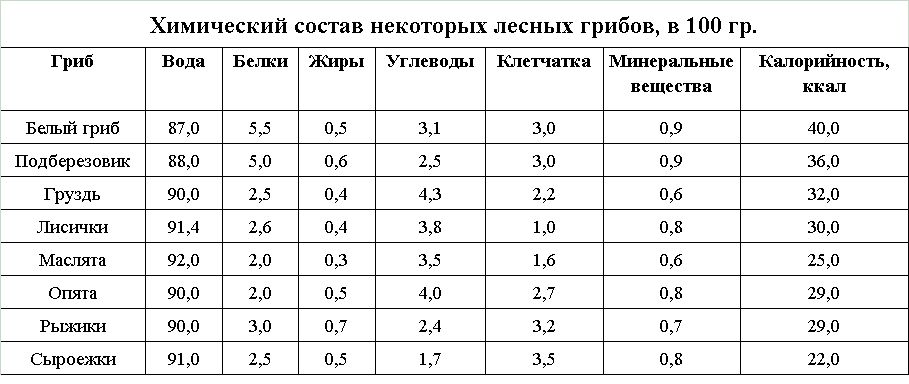
Pregnant and lactating women are allowed to eat a small amount of mushrooms after proper heat treatment. When breast-feeding, mothers can eat fruits grown on ecological plantations, in greenhouses that are not amenable to chemical processing. The most harmless species are champignons and gray oyster mushrooms.
Champignons are grown on special industrial sites, therefore they are characterized by a low content of toxins. Due to the high liquid content, they positively affect digestion, help to remove excess minerals and waste from the body, and increase the volume of breast milk.
Champignons are easily digestible and are able to establish stools and eliminate constipation. Dishes with their use are low in fat and simple carbohydrates. When prepared, champignons have a low energy value (25-40 kcal / 100 g), which depends on the method of preparation.
Oyster mushrooms are also safe.This product is often included in the diet when dieting because of its high protein content and its good digestibility, as well as the presence of a large amount of dietary fiber. They stimulate digestion, positively affect the intestinal microflora, and help to remove toxic substances from the body.
Of forest mushrooms, varieties such as ceps and chanterelles can diversify a woman’s diet during lactation. Whites have high sorption properties, therefore, they can accumulate radionuclides and nitrates, it is better to introduce them into the diet after switching to mixed feeding or after feeding the baby. They inhibit the digestion of food in the stomach, but at the same time give energy and strength, strengthen the immune system.
Chanterelles, when cooked properly, can not only diversify the diet, but also bring benefits: they have adaptogenic properties, which is very important for a woman's quick recovery after giving birth and changing her lifestyle.
Safe use of mushrooms for hepatitis B
You can introduce such a product to a nursing mother no earlier than 4-6 months of lactation. It is recommended to eat them no more than several times a month.
Treatment
During pregnancy and lactation, only freshly prepared fruits can be consumed. In no case should you use dried and frozen mushrooms, as well as spoiled, rotten, worms, with significant mechanical damage. It is allowed to eat stewed or baked dishes.
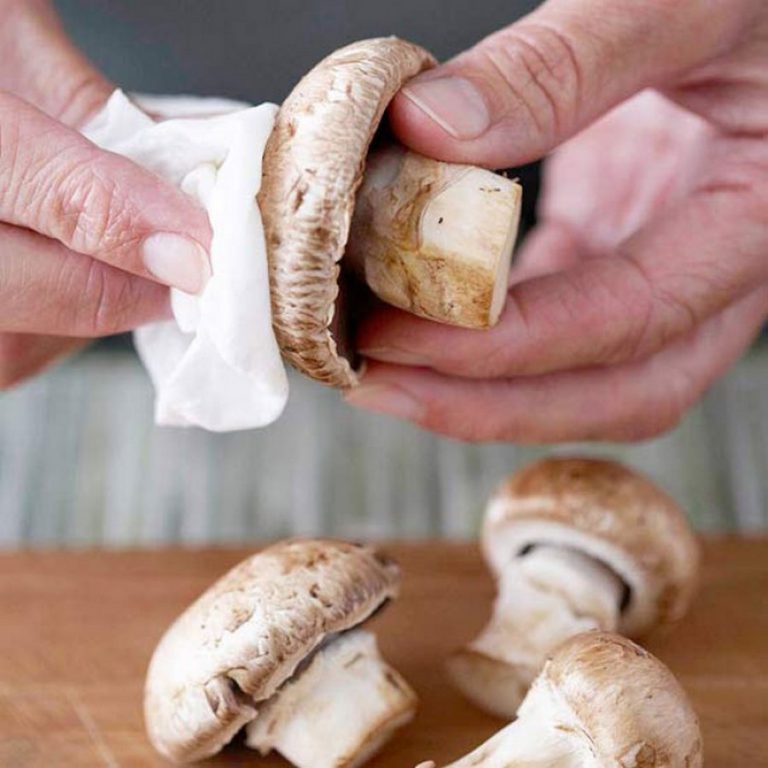
Before cooking, carefully sort through all the mushrooms. Then they should be washed very well, cleaned from roots and moss. Rinse again. In order for this product to completely boil or fry, it is necessary to cut the caps in uniform small pieces.
During cooking, only high-quality vegetable oil or low-fat sour cream should be used for refueling; salt, black ground pepper or other spices to taste are added to add taste and aroma. In no case should you add mayonnaise, ketchup or spicy seasonings (chili, paprika) to the dish.
Healthy Mushroom Recipes
A lactating woman can take such useful mushroom dishes:
- Porridge with mushrooms:
- champignons - 150 g;
- groats (rice, buckwheat) - 1 cup (100 grams);
- half a carrot.
- half onion;
- sunflower or olive oil - 15 ml.
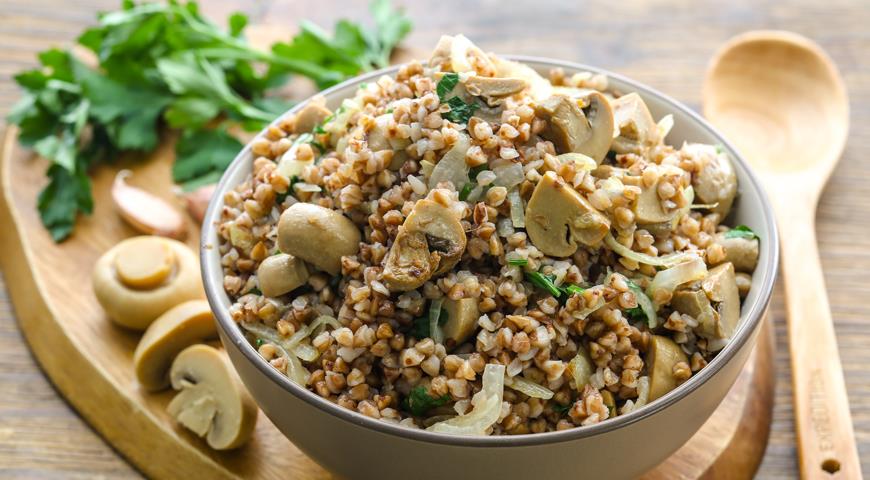
Porridge with mushrooms
Grind vegetables, fry a little in vegetable oil. Add finely chopped champignons to the pan and simmer for 10-15 minutes. Pour cereal, salt and pour boiling water. Cover and leave over low heat until cooked.
- Casserole:
- oyster mushrooms (can be replaced with mushrooms) - 400 gr.;
- turkey - 600 gr.;
- cream - 250 gr.;
- 2 medium onions;
- cottage cheese - 250 gr.;
- sunflower (olive or linseed) oil - 2 tbsp. l
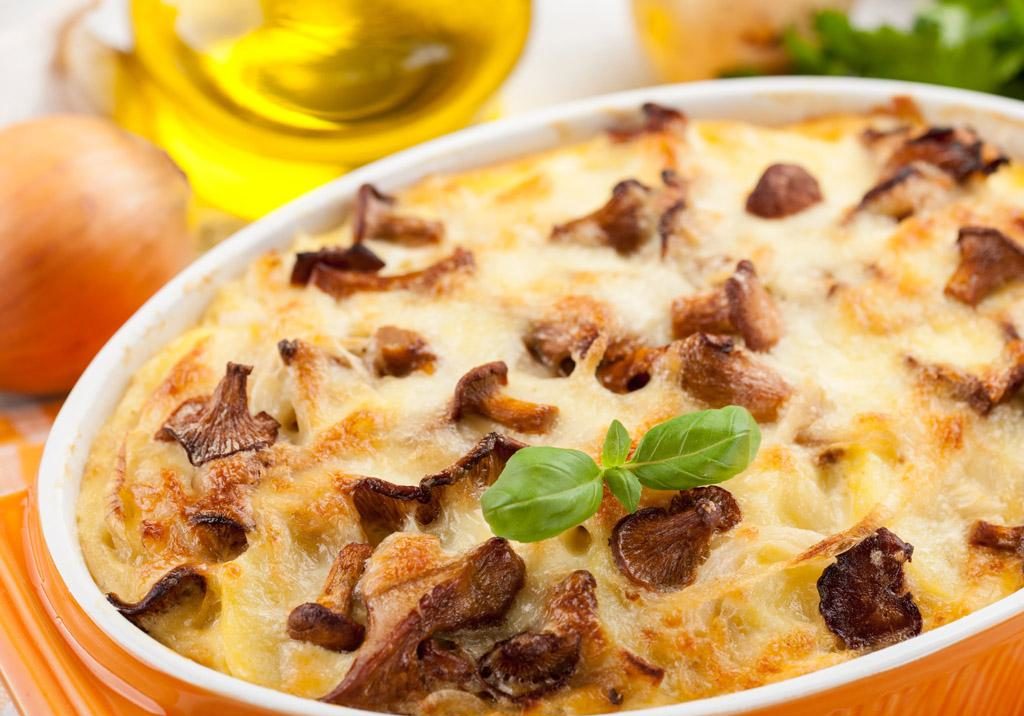
Casserole with mushrooms
Cut small pieces of oyster mushrooms and turkey. Grease the form with vegetable oil. Mix all the ingredients except cottage cheese. Add sour cream, salt and pepper, put everything in a mold. Mix the cottage cheese with the remnants of sour cream and put on top. We bake for 45 minutes at a temperature of 200 degrees.
- Champignon salad:
- champignons - 250g .;
- chicken breast - 300 gr.;
- chicken liver - 100 gr.;
- cheese;
- cucumber - 1 pc.;
- sour cream - 100 gr.;
- salt, pepper to taste.
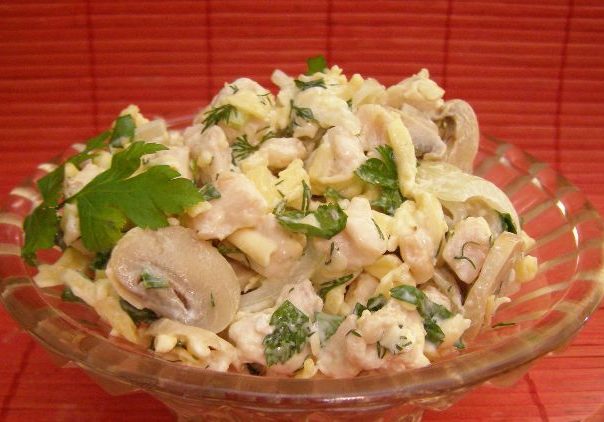
Chicken Salad with Mushrooms and Cheese
Separately, boil champignons, chicken breast and liver.We cut everything in strips. Mix and season with sour cream. Add salt and pepper to taste. Sprinkle with grated cheese.
Limitations and contraindications
If a woman is not sure about the quality and safety of mushrooms, it is better to abandon their use. During HB, half-baked, raw and pickled fruiting bodies should be completely excluded, and only properly prepared dishes should be eaten. Marinade can cause poisoning, heartburn or indigestion, as well as provoke colic in the baby.
Answers to Common Questions
There are many questions regarding the intake of mushrooms in hepatitis B. Here are some of them with answers:
You can remove product residues from the intestines with a cleansing enema. After carrying out these manipulations, you need to take sorbents - activated carbon, white coal, polysorb. If the temperature rises or the symptoms do not subside, hospitalization is required. Breastfeeding is interrupted from the moment the first symptoms appear.
Is it possible to use mushrooms for a nursing mother, remains a debatable question, since in addition to the benefit, they can be harmful because of their toxicity. If a woman has decided to include them in the diet, then when planning the menu, it is important to choose only safe species and the most rational ways to prepare them.

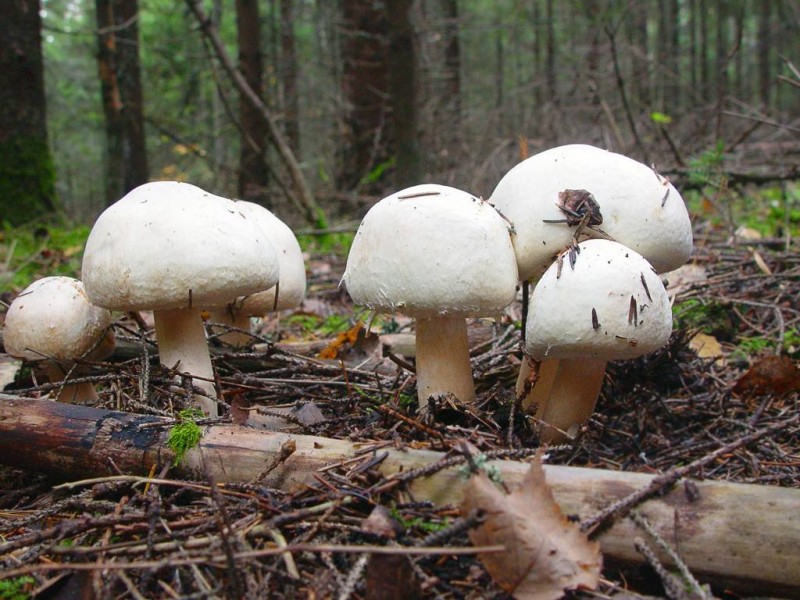
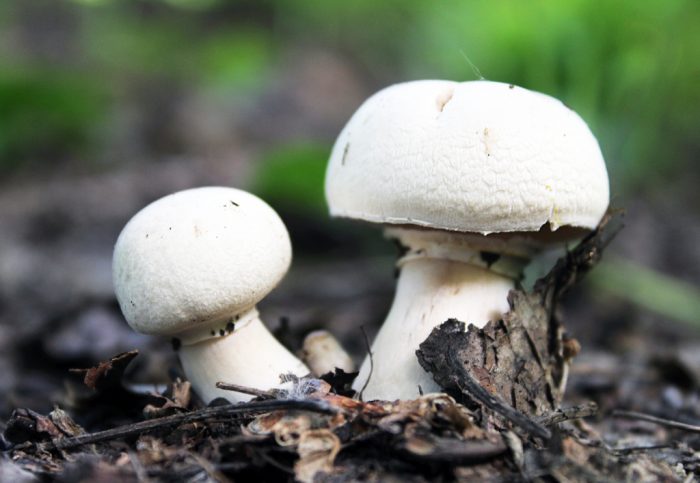
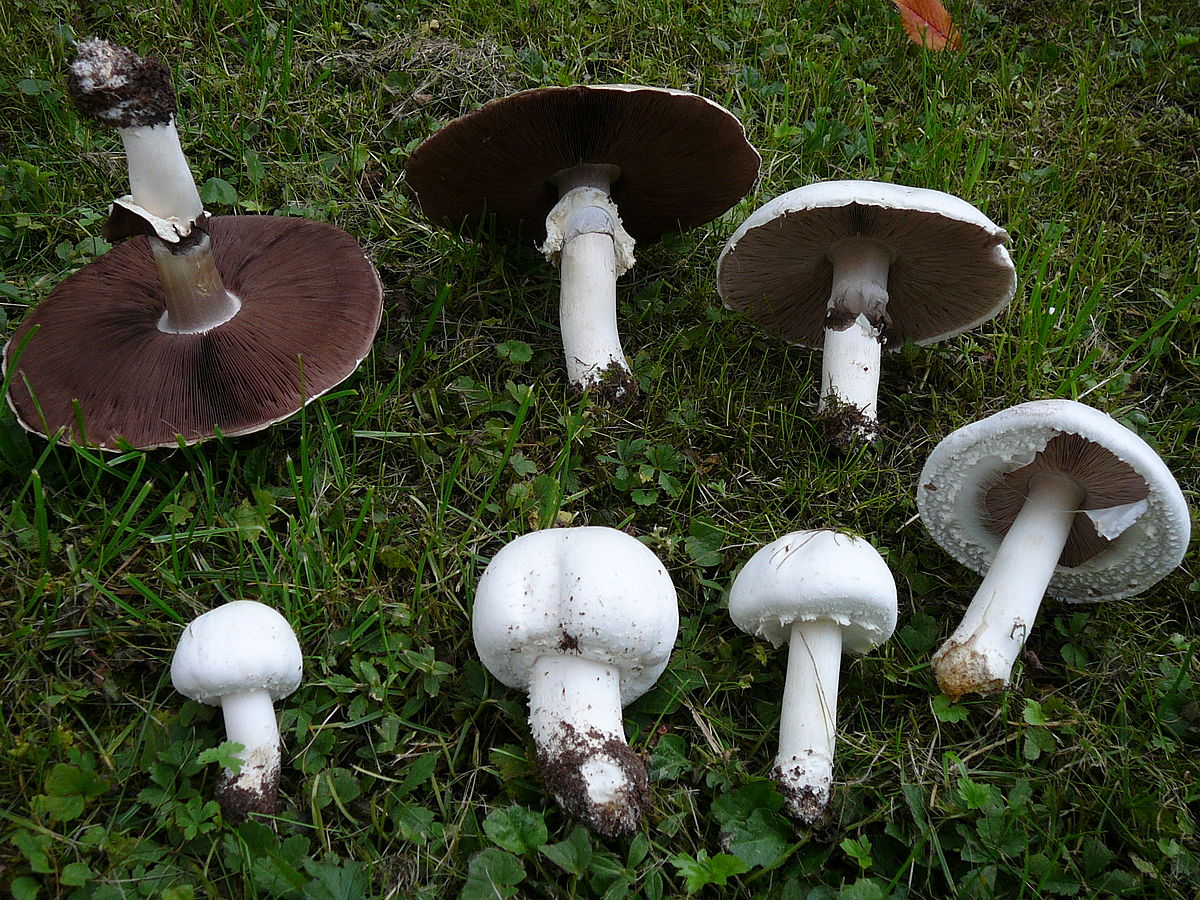
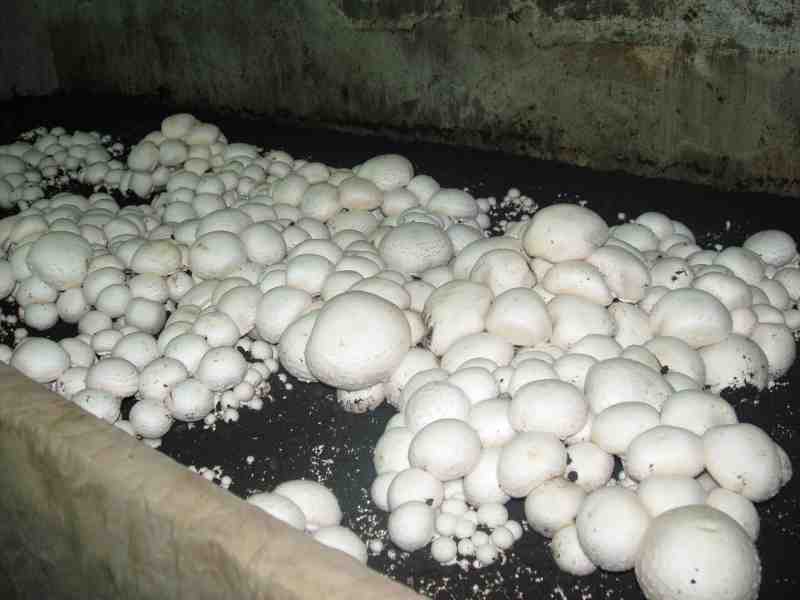
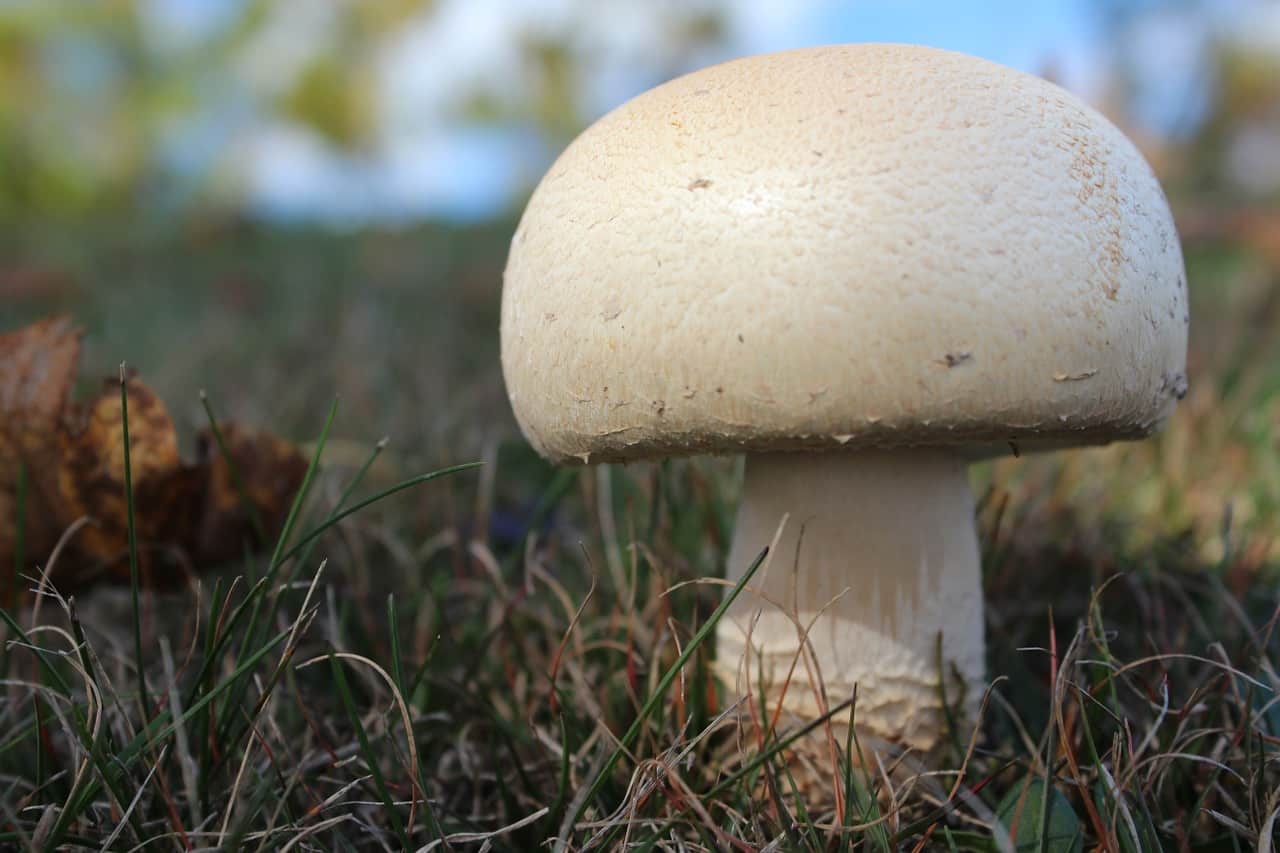




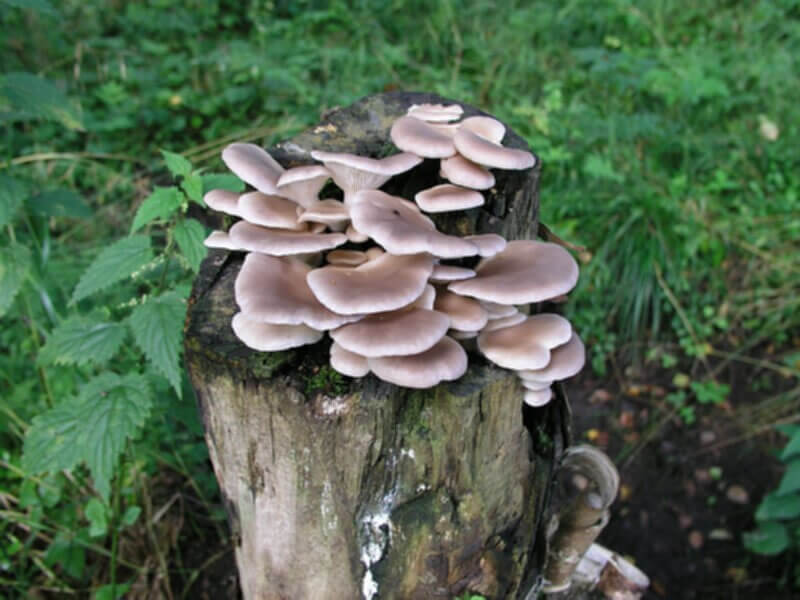

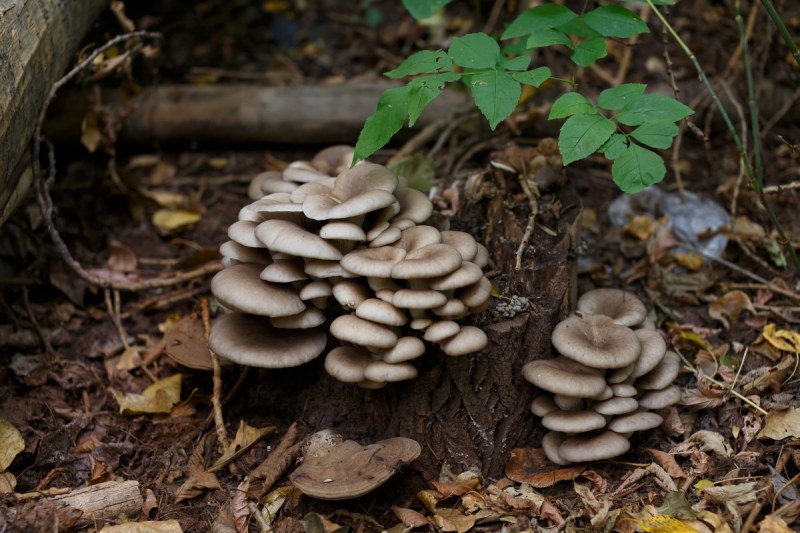
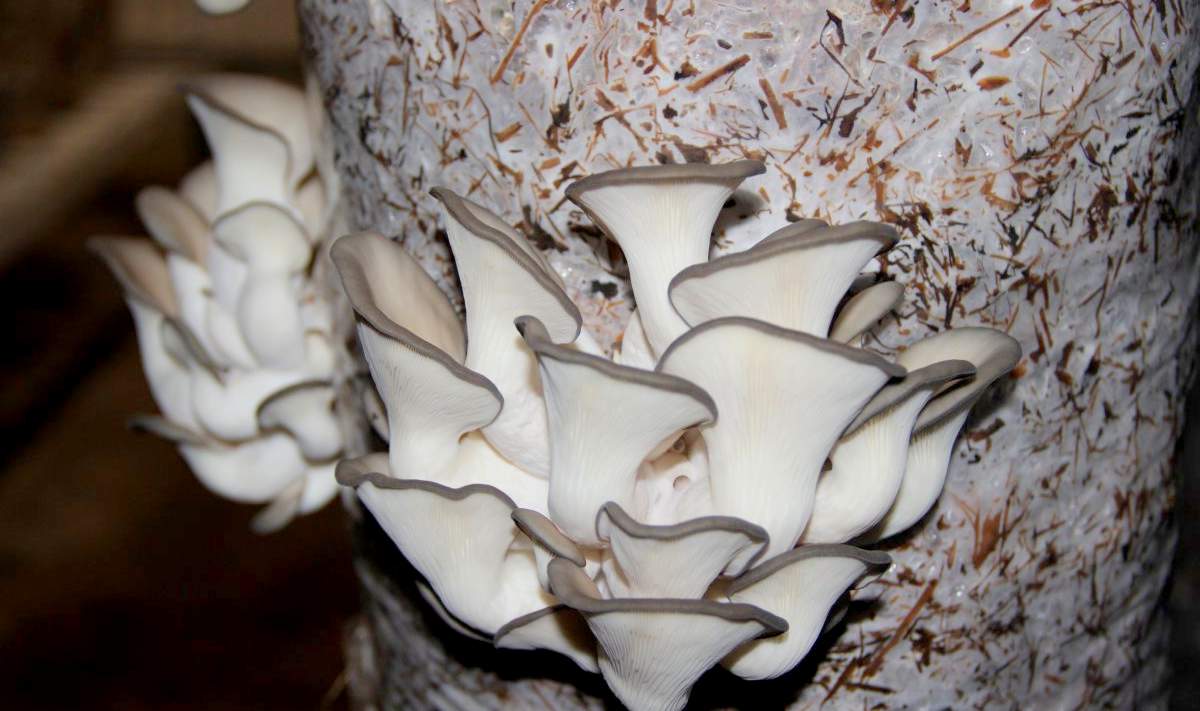
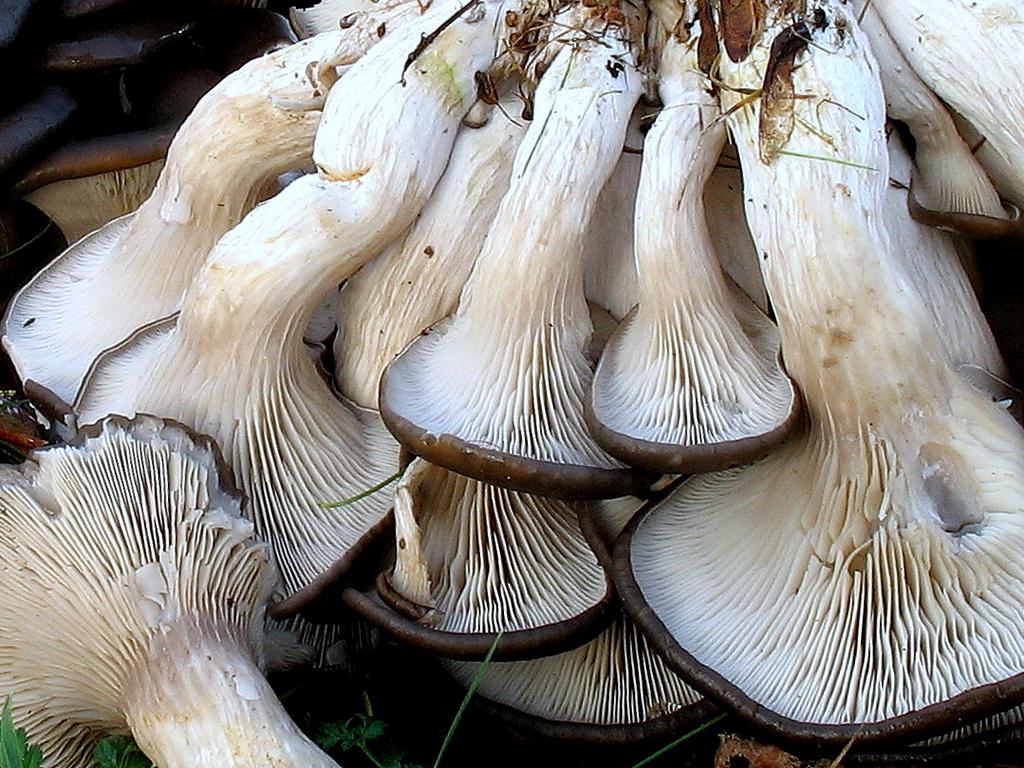
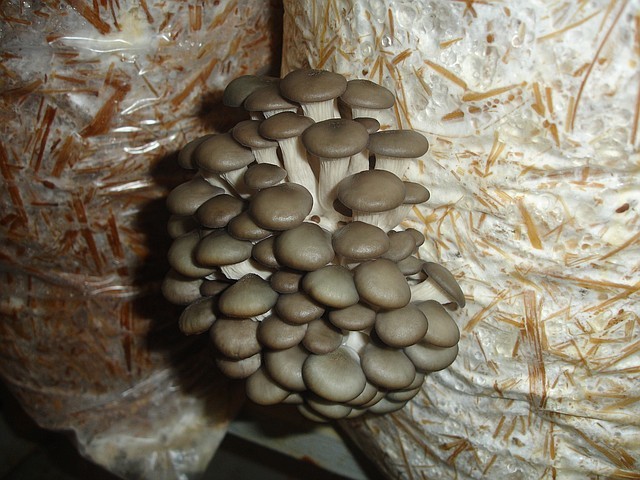
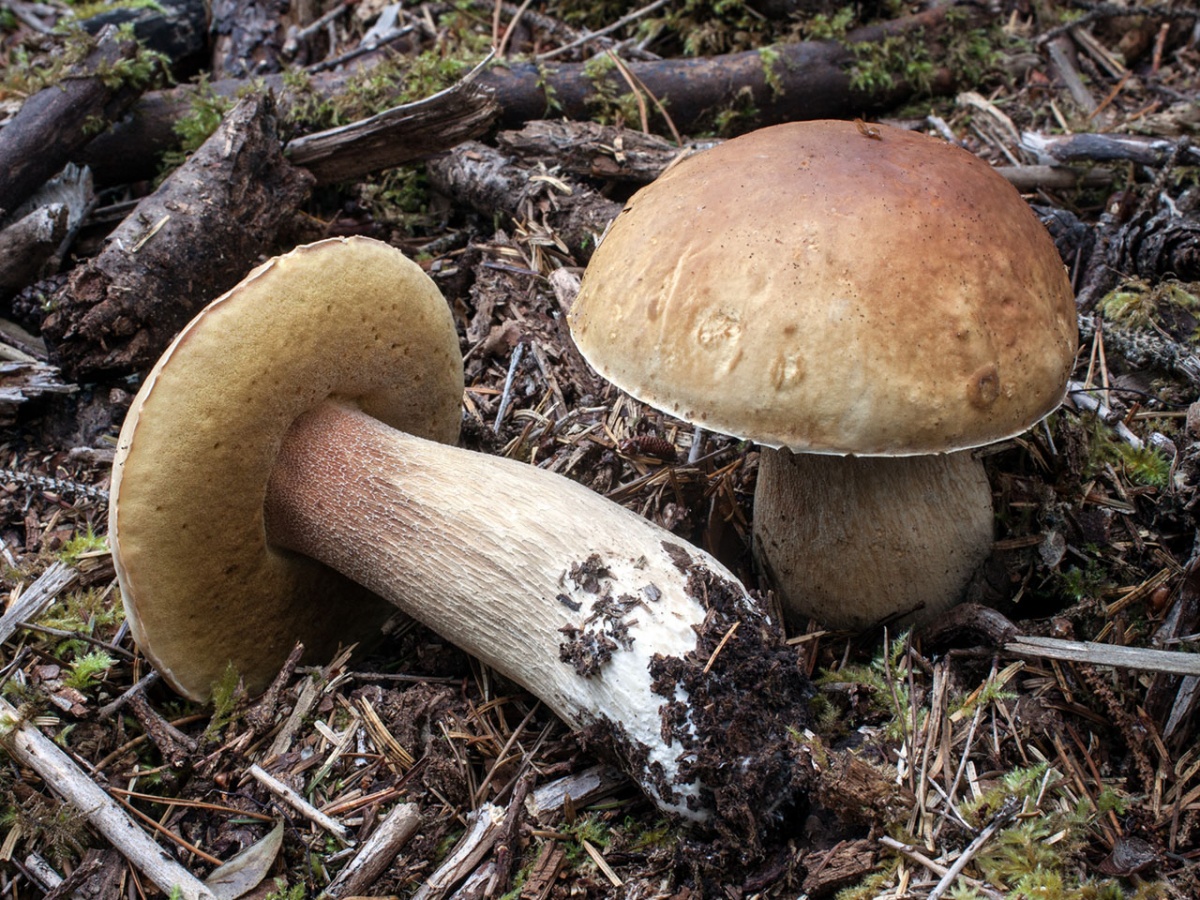
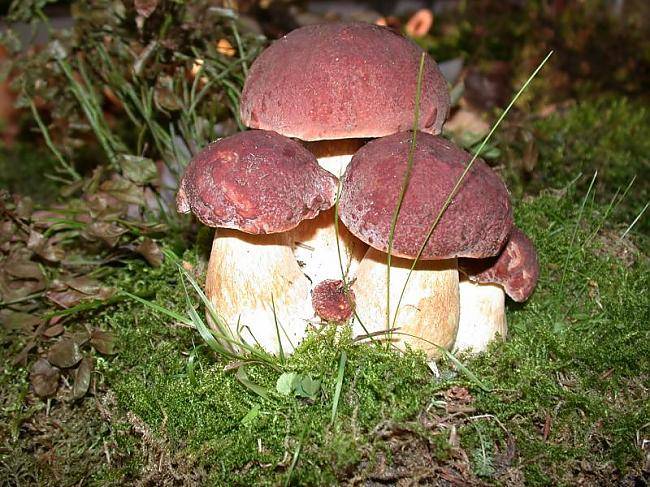

 Care and use of Kombucha at home (+22 photo)
Care and use of Kombucha at home (+22 photo) Edibility of the fungus of the motley umbrella and its description (+19 photo)
Edibility of the fungus of the motley umbrella and its description (+19 photo) Description of edible and inedible oils, their poisonous counterparts (+40 photos)
Description of edible and inedible oils, their poisonous counterparts (+40 photos) Useful properties of milk mushroom and its contraindications (+17 photos)
Useful properties of milk mushroom and its contraindications (+17 photos)